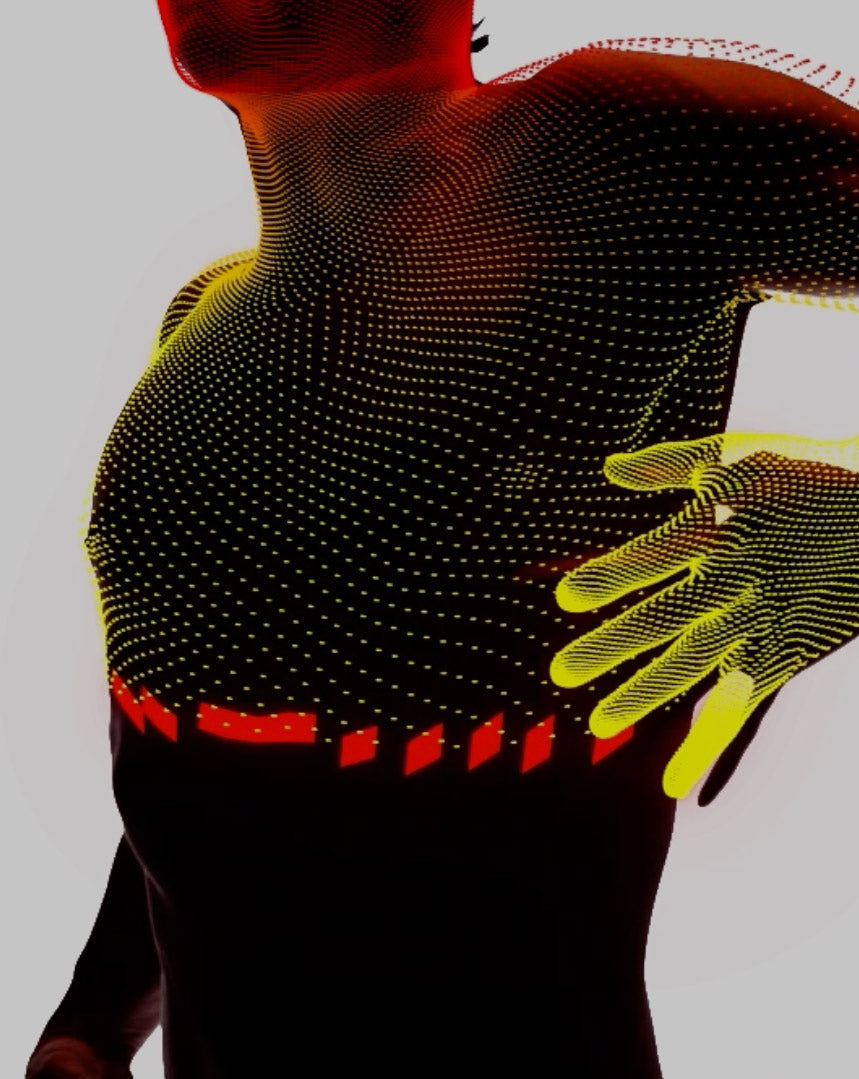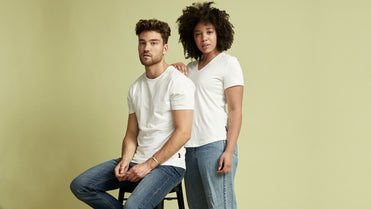Fabrics are a rabbit hole of facts, half truths and politics and it's honestly really hard to know if you're making a good choice.
But knowledge is power, and spending a few seconds looking at composition tags is actually one of the easiest things we can all do to make our wardrobes more planet-friendly. Because ignorance is simply not an option when 70% of the environmental impact of your clothes is in their materials.
70% of the environmental impact of your clothes is in their materials.
Our natural-fibre only position here at Citizen Wolf is well known and we go to great lengths to ensure we only provide great sustainable choices for our customers.
But we get asked all the time what's the most sustainable fabric?
There is no single fibre that’s perfect on every level but Cannabis Sativa - aka hemp - comes pretty darn close. So settle in and grab yourself a cuppa (or perhaps a whiskey) because there's a loooooot to unpack as follows:
- Meet hemp, your ancient BFF.
- How is hemp made into fibre.
- Features of hemp fabric.
- The agricultural 'miracle' of hemp.
Meet hemp, your ancient BFF.
Hemp is an ancient plant that humans have cultivated for thousands of years, visually and taxonomically identical to the fun-loving feeder cousin of the family, Mary Jane.
You can smoke hemp but the only high you’ll get is the moral high ground of your fabric choice (and perhaps a headache).

In fact the only difference between them is the concentration of THC (Tetrahydrocannabinol aka the ‘jazz’ in your jazz cigarettes) - up to 30% for marijuana compared to only 0.3% for hemp.
So yes, you can smoke hemp but the only high you’ll get is the moral high ground of your fabric choice (and perhaps a headache).
Renowned for its strength and resistance to water rot, hemp was famously used in the sails and ropes rigging the ships that took Columbus to the New World.
Fast-forward a few hundred years and the US constitution was drafted on paper made from hemp and the very first US flag was also made of hemp fabric. A few years later and the first pair of Levi’s were hemp and then until the 1920’s around 80% of all clothing in the US was hemp.
How is hemp made into fibre?
Hemp is a ‘bast’ fibre derived from the naturally soft and flexible stems of Cannabis Sativa. To get the fibres the outer layer of bark has to be removed along with the woody core in a process called ‘retting’.
Fun fact, this is exactly the same process that creates linen from the stem of the flax plant, so it’s no wonder they share a similar texture once processed into fabric.

There are three main retting methods but only one is truly sustainable.
The traditional and most planet friendly process is called paddock or ‘dew’ retting, using naturally occurring microbes to break down the bark over the course of several weeks. The main advantage to paddock retting is that 60-70% of the nitrogen (aka fertilizer) contained in the stalks is returned to the soil setting up near-perfect conditions for the next crop.
All Citizen Wolf hemp fabric is guaranteed to use the planet friendly paddock retting process.
The second method is water retting and was traditionally done in lakes or rivers, but today is done in tanks. It’s much faster than leaving stuff sit in the field and takes just a few days. The final, fastest but least environmentally friendly method is chemical retting which uses enzymes to speed up the tank process even further.
After the retting process the fibres are mechanically spun together to create a continuous thread with minimal additional environmental impact which are then woven or knitted together to make what we consider to be the most sustainable fabric in the world.
Features of hemp fabric
Hemp is naturally antimicrobial with a high UV resistance. Hemp is also incredibly durable with 3x the tensile strength of cotton and why it was so highly prized by the sailors of old for their ropes and sails.

Hemp is naturally antimicrobial with a high UV resistance and 3x the tensile strength of cotton.
Hemp does soften over time although it takes much longer than either cotton or linen due to the high tensile strength.
Like linen, hemp is extremely breathable and thermo-regulating, keeping you cool in summer and warm in winter by trapping a layer of air between your skin and the garment.
Like all natural fabrics, hemp is biodegradable.
The agricultural 'miracle' of hemp.
The easiest way to think about hemp is as the bastard lovechild of a farmer and an environmentalist. Producing the raw ingredients for any textile consumes more carbon than any other stage of the process, and it’s here on the farm that hemp really shines.
1. LESS WATER
Hemp is a hearty, drought resistant crop which thrives in a variety of soil and climate types across much wider latitudes than cotton.
Overall water usage for paddock retted hemp can be up to 4x less than cotton.

On average it takes 10,000 litres of water to create 1 kg of cotton which is nuts. Hemp requires only around half the water it takes to grow the equivalent amount of cotton fibre.
And once the water used in processing to fibre is taken into account, overall water usage for paddock retted hemp can be up to 4x less than cotton. Water which can and should be used to keep people alive in a world of increasing water stress driven by the climate crisis. [link to Guardian word usage article].
2. ZERO CHEMICALS
Hemp is naturally organic and requires no herbicides or pesticides. Colloquially known as ‘weed’ for a reason, hemp grows incredibly densely at up to 500,000 plants per acre (about ¾ of a football field). The density of stem combined with broad leaves blocks sunlight, literally choking out other plants and deterring pests.
Hemp is naturally organic and requires no herbicides or pesticides.
3. ZERO WASTE
Every single part of the hemp plant can be used by humans like a vegan 'nose to tail' wet dream.
Apart from fabrics, the bast fibres have been used for thousands of years to make fine quality paper that is naturally acid free and doesn’t become yellow and brittle over time like conventional paper.
The woody core of the stalk is used to make a range of carbon-friendly building materials such as ‘hempcrete’ which is just as strong as traditional concrete while being non-toxic and naturally resistant to mold, insects and fire.
Every single part of the hemp plant can be used by humans like a vegan 'nose to tail' wet dream.
The seeds are considered a ‘superfood’ used mainly to clog up your Instagram feed. Hemp seed is the only plant-based source of “complete protein” containing an ideal ratio of the “good” omega fatty acids as well as all nine amino acids that must be consumed via diet as they cannot be made by the body.

While not as nutritional as the seeds, hemp leaves are edible and can be consumed raw as leafy vegetables in salads or pressed to make juice (which I imagine tastes pretty bad if the edibles of my youth are any yardstick).
Hemp oil (derived from the seeds) was used for centuries as lamp light oil and is also an attractive feedstock for biodiesel with a high conversion efficiency of 97% that burns at lower temperatures than alternatives.
4. INCREDIBLE YIELD
Considering our planetary resources are finite, yield plays an extremely important part in any sustainability calculation.
Growing up to 4.5 metres tall and due to their natural density, hemp needs much less land to produce the same amount of fibre as other plants. Per acre hemp produces up to 250% more fibre than cotton and up to 600% more fibre than flax (linen)!
Per acre hemp produces up to 250% more fibre than cotton and up to 600% more fibre than flax (linen)!

Even better, hemp also grows extremely quickly averaging only 100 days from planting to harvest, versus 6 months for cotton. This makes 3 hemp crops per year feasible compared to a single cotton crop, further solidifying hemp’s yield advantage.
5. SOIL HEALTH
We’ve already seen a pretty bloody impressive list of features, but probably the most important thing about hemp from an agricultural perspective is the root system.
Hemp has a large tap root capable of penetrating deep into the soil to pick up water and nutrients. These deep roots prevent erosion and also aerate the soil leaving it rich for the next crop. And when the traditional paddock or ‘dew’ retting process is used, hemp also returns 60-70% of the nutrients it takes back into the soil, making it the perfect rotation crop for farmers already growing soy or corn.

The Ukraine used industrial hemp to assist with the cleanup of the Chernobyl site, naturally removing radioactive elements from the soil and groundwater.
Even more incredible is the ability of hemp to leave soil in far better condition than when it started via a process called ‘phyto-remediation’ whereby hemp locks up pollutants such as heavy metals by absorbing them through the roots.
Fun fact, the Ukraine used industrial hemp to assist with the cleanup of the Chernobyl site, naturally removing radioactive elements from the soil and groundwater. Yes really!
6. CARBON POSITIVE
High biomass crops like hemp are also able to sequester large amounts of carbon through boring old photosynthesis. In fact hemp can trap 1.63 tonnes of CO2 per tonne of hemp harvested (or 10 tonnes per acre), which is roughly 230% more than the equivalent fast-growing Eucalypt forest in a year.
Hemp can trap 230% more carbon per year than fast-growing Eucalypt trees.
And when the hemp is turned into products that permanently lock up the carbon such as hempcrete and other building materials, it becomes an incredibly efficient 100% natural carbon capture system.
Problems with hemp fabric.
If you’re still reading you’re probably thinking “Why the hell don’t we use hemp for everything?!”.
It’s a good question but it’s not all sunshine and lollipops in the hempiverse. So before you finish this can of Kool-Aid let’s look at the downsides to hemp specifically within the world of textiles.
Pure hemp fabric has a distinctive odour and also doesn’t produce fabric with the same natural whiteness of cotton, which means more bleach is required to make hemp fabric usable.
But the Achilles heel of hemp today is constrained supply which is why its many many times more expensive than even organic cotton. The vast majority of the world’s industrial hemp is grown in either Romania or China today, and it’s estimated that there’s less than 1 million acres of hemp under crop globally versus 33 million acres of cotton.
The Achilles heel of hemp today is constrained supply
For these reasons we blend 55% hemp with 45% organic cotton to create a jersey with a gorgeously soft handle on Day 1 that won’t break the bank.
Conclusion
Hemp isn’t called a miracle plant for nothing, but constrained supply is ultimately holding it back from becoming the dominant fibre on the planet.
There's no quick fix, but you can be the change you want to see by voting with your wallet and choosing hemp next time you’re buying Tees.
Because we believe that hemp is the most planet friendly fabric available today, we want to make the sustainable choice easy with Citizen Wolf Made-to-Measure Tees in our gorgeous hemp / organic cotton blend which you can choose on any Tshirt style template:







